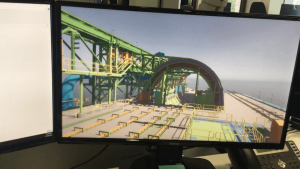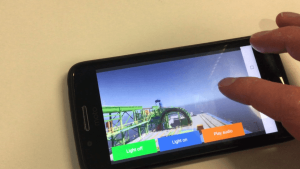Last month the Sentient development team took a day off from their projects to up skill and play with some new tech and tools.
These days are really valuable for the team, giving us the space to experiment, sometimes to fail and learn, and to look outside the box to solve problems.
This tech day we looked at WebRTC, a web technology that allows users to stream software applications over the internet. The problem we were solving was building for older hardware that cannot cope with the type of applications we build, as the hardware becomes very slow, or loses functionality.
Building with WebRTC allows us to ignore the end user’s hardware completely. WebRTC is set up so Sentient’s own powerful remote computer (with highest quality hardware) runs the application and takes the burden of the processing.
The user then accesses the software by streaming it from the remote computer, similar to how one would stream a video from Netflix, but with the added control. All users have full functionality and no slowing, as their hardware has to do none of the work. The only requirement is to have a decent internet connection.
This development from WebRTC has enabled all kinds of devices, including mobiles and tables, to use data visualisation or process flow applications. We are excited to see how this new technology can be used to build bigger and better work for our clients in the future.
 |  |
|---|
Another exciting problem that was worked on this tech day entailed integrating SCORM capability with VR. While many of us are excited about the possibilities that virtual reality holds for training (see our Working at Heights application for more), linking a learner’s results with a learning management system (LMS) remains an ongoing issue.
Some of our team came up with a fantastic solution for this problem. This entails integrating WebVR (virtual reality applications hosted on the web) with Articulate Storyline, an elearning application that already has the capacity to hook into an LMS. What is exciting is Storyline is not only able to record that the user has completed the training, but scores from within the VR component of the module can also be recorded, allowing managers to assess performance across all areas of the training.
Some of our next steps include integrating the WebVR integration into our current VR training workflow, and potentially also add it our existing VR Training Modules.
A few other tools for VR were also developed during our tech day. When modelling virtual worlds, realistic water flow is very difficult to create. We explored a new tool, Lux water which makes this process easy, and more importantly looks great. Viewing an offshore oil rig, or a subsea system in VR will now be even more immersive with great water graphics.
We also had a look into a second tool, which allows users to paint on the world around them while in VR. Markups and collaborative planning could become a whole lot easier with your own magic marker in VR.
What is really fantastic, is that in the month since tech day, some of these tools have already been applied to client projects. The value of tech day really speaks for itself.


